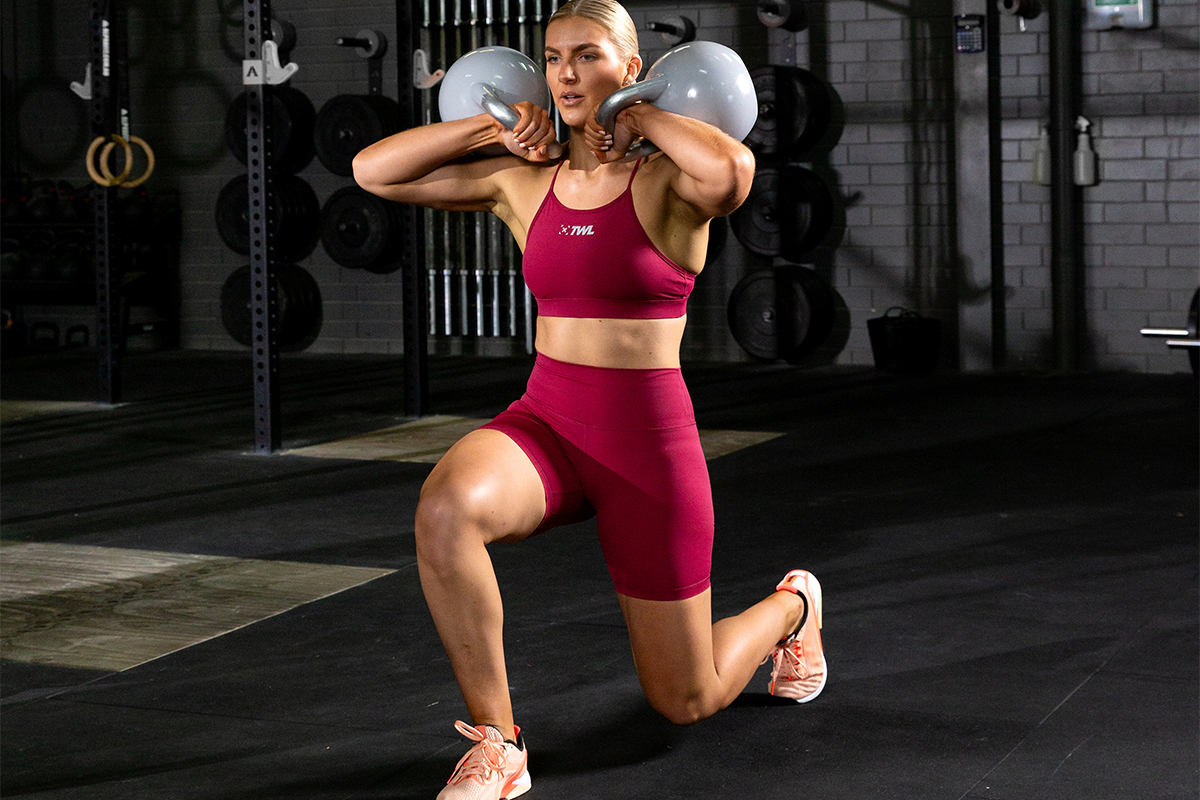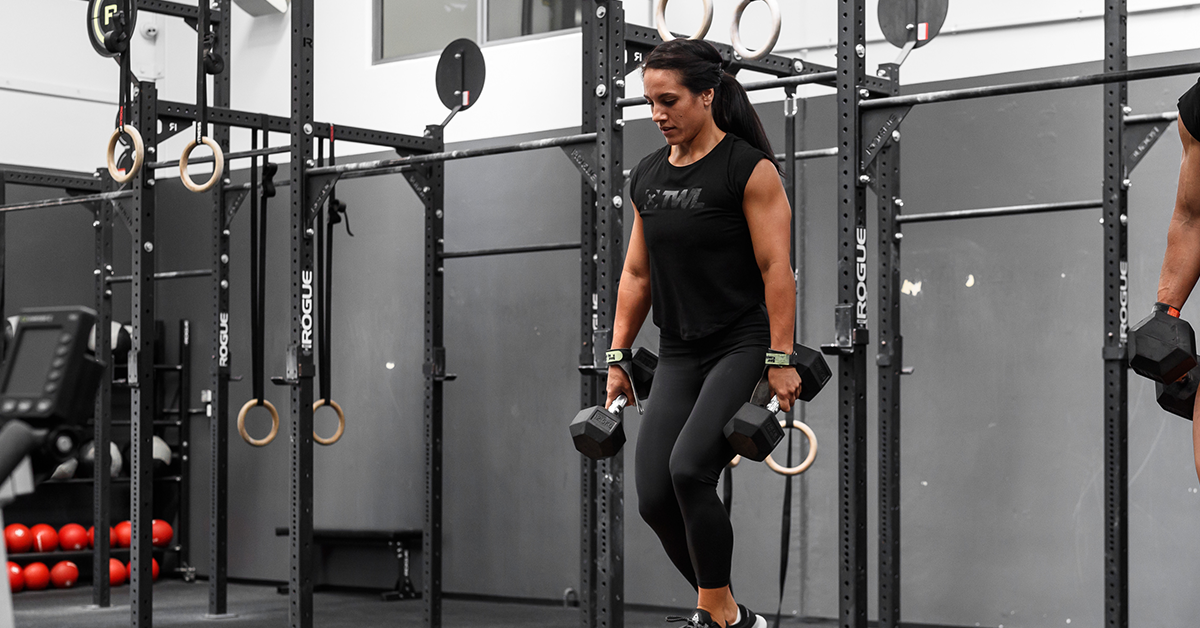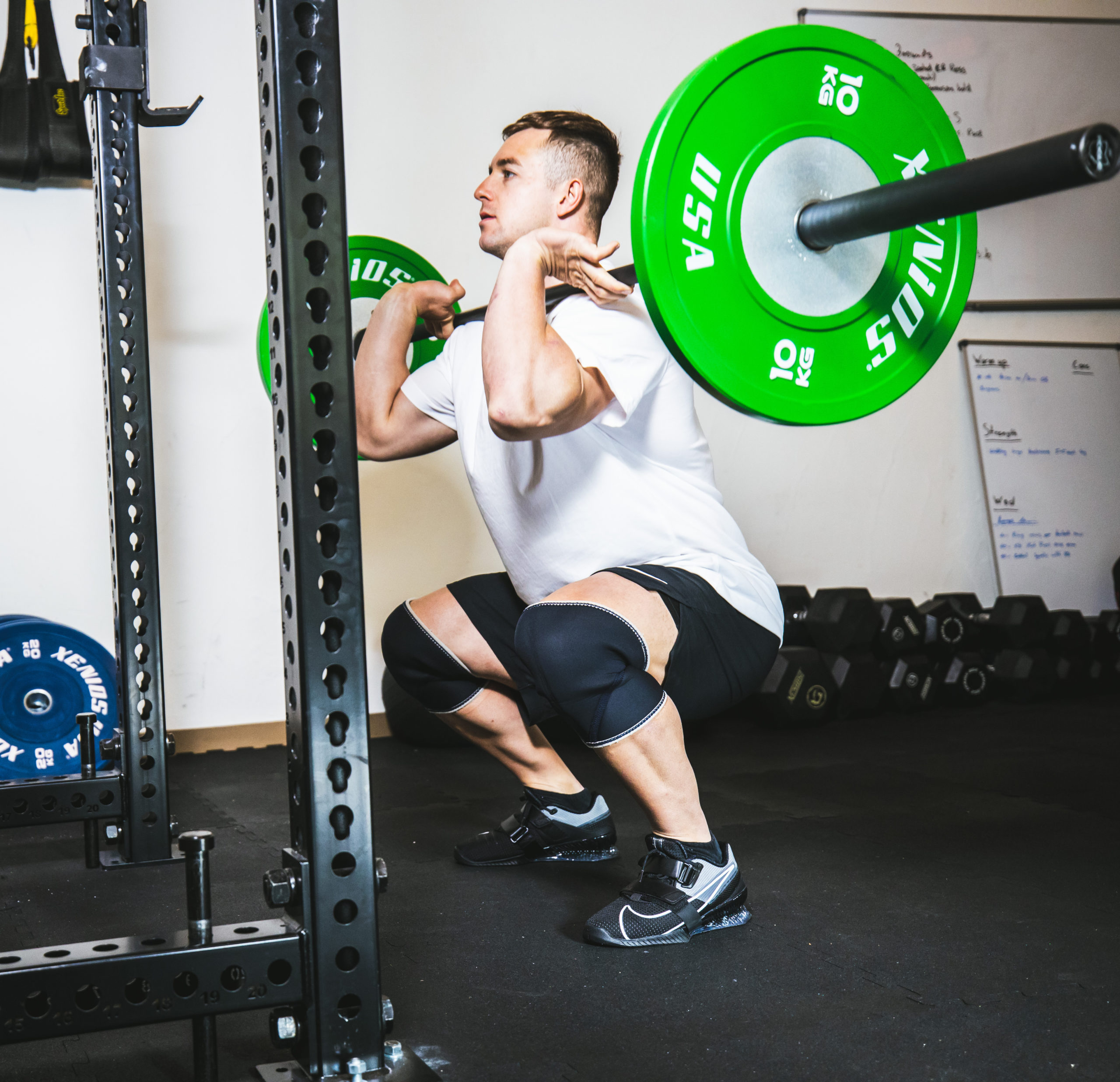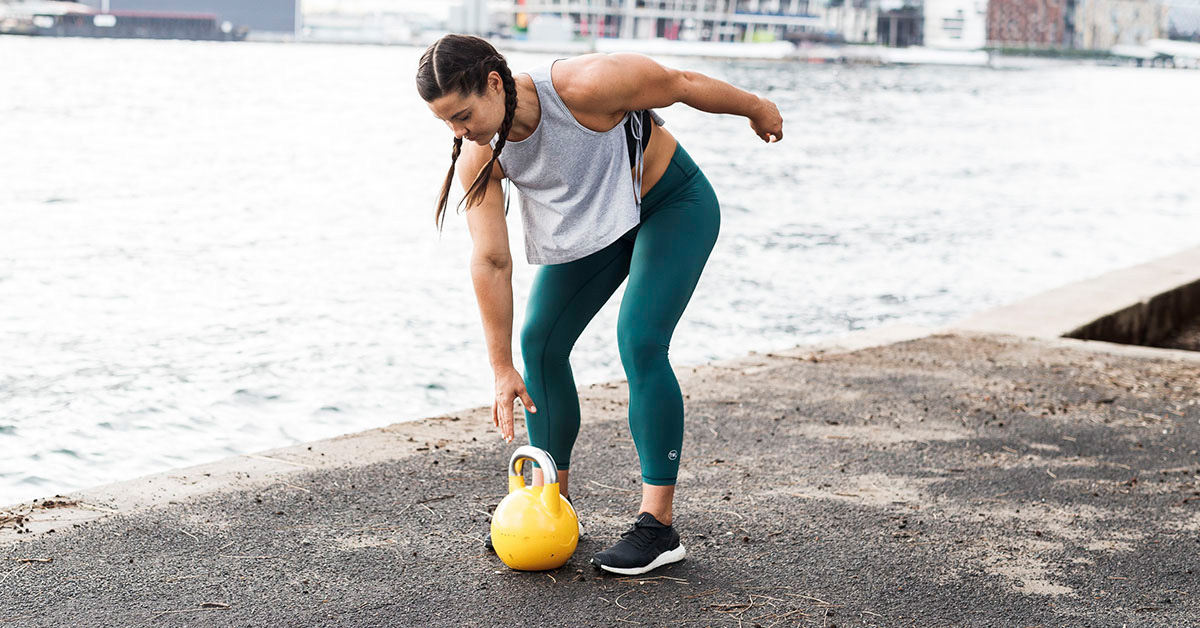We’ve talked before about how there are endless squat variations to build lower (and upper!) body strength. Yet another variation is the split squat. In this quick overview, let’s talk about what a split squat is, how to do it, some of the benefits, and a few variations.
What is a Split Squat?
Many people think that a split squat is the same as a lunge. They are similar but with one key difference. Lunging involves taking a step out and then back in. Your feet move throughout the reps. With a split squat, you work one side of the body at a time, so your feet stay put until you’re ready to switch sides. You split your legs forward and back, squat, straighten your legs again, and then repeat for reps.
Let’s break down how this works.
How to Do a Split Squat
Here’s the good news: Getting down the split squat technique is pretty simple!
- Start in a standing position with your feet roughly hip-width apart.
- Choose one side to start with — let’s say the right. Step your right foot forward. Think of gripping the floor with that foot.
- Simultaneously bend both legs so that your back knee gently touches the ground. At this bottom position, both legs should be bent at approximately 90-degree angles. If they aren’t, adjust accordingly. At this point, your front foot should be firmly planted on the ground. Your back heel should be off the ground. If you need some cushioning for your knee, try something thin like an ab mat.
- Straighten your legs to complete the rep.
Here’s what it looks like in action.
And that’s it! What about reps and rounds? You have a lot of breathing room here, but if you’re new to split squats, try something like 3 rounds of 8-10 reps.
4 Benefits of Split Squats
It’s a simple movement that packs a big punch!
1. Split Squats Build Lower-Body Strength
Split squats are a great way to build strength in the lower body, specifically the quads, glutes, and hamstrings. And because you can add weight to the movement (more on this in a minute), you can always increase the difficulty.
And because they don’t require quite as much mobility as a front or back squat, spit squats are especially great for athletes who can’t yet do the standard squat safely or comfortably.
2. You Can Target Imbalances and Weakness
Split squats are what we call a unilateral exercise. This means you work one side of the body at a time. This is an excellent way to find any imbalances in weakness.
No human is perfectly symmetrical in strength, and that’s okay. But we still care about imbalances. Here’s why. Imagine that your right leg is significantly stronger than the other. This means that when you’re doing things like squats or cleans, the right leg compensates for the left leg and thus does the majority of the work.
Despite the right side being stronger, it’s now vulnerable and at an increased risk of injury, because it’s doing most of the heavy lifting! This is why we care about the left and right sides of the body being as equal in strength as possible.
3. They Enhance Balance and Coordination
Because of the split position that your feet are in, your body has to fight to stabilize and stay centered while you squat. Bonus! Needing to find your center of gravity and stabilize both forward and back and side to side is a benefit that will 100% translate to other things you do in the gym.
4. Split Squats are Good for Your Hips
This is especially the case if you sit a lot, which can lead to tight and weak hip flexors. Those tiny muscles have a big job to do, and they need a chance to stretch and engage. Split squats are a low-impact but effective way to both enhance mobility and build strength. We call that a win.
3 Tips for Split Squat Success
Ready to try split squats for yourself? Here are a few helpful hints.
1. Square Your Hips
When we say “square,” we mean that the fronts of your hips should both be pointing straight forward. If they’re twisting and turning to either side, this compromises your positioning and thus, your gains.
2. Hold Your Torso Upright
A common mistake that athletes make in the split squat is to lean forward until their torso is almost touching that front quad. Other athletes use this as a way to “cheat” because it actually makes it a little easier to stand up.
Don’t be that athlete! Your hips, spine, neck, and head should all be in alignment. In other words, your torso should be straight and your gaze should be straight ahead.
3. Keep Your Feet Shoulder-Width Apart
It shouldn’t look like you’re walking on a tightrope. Similar to your footwork in a split jerk, your feet should always be a little spread apart. This helps you stay balanced.
A Few Split Squat Variations
Are you ready to spice things up? Once you’ve mastered bodyweight split squats, here are a few ways to up the intensity.
Shop Now
- Use a barbell in the front rack or back rack position.
- Hold a dumbbell or kettlebell in each hand. You can either hold them at your sides or prop them up on your shoulder.
- Try deficit split squats. Prop your front or back foot up with a bumper plate.
- Give Bulgarian split squats a shot. This is where the back foot is propped up on a bench or chair, like so:
You can then make these even harder by adding weight in the same way we described above. Spicy!
Making gains doesn’t have to be complicated to work. Try split squats for yourself — you just might be too sore to walk the next day.

















